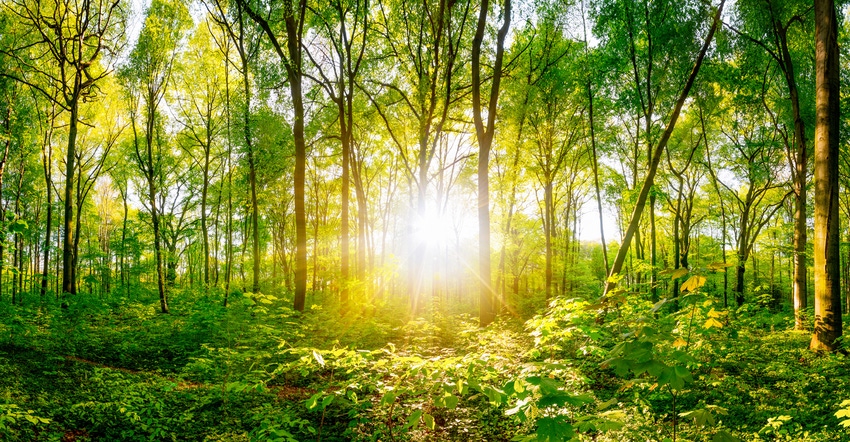February 9, 2017

Agroforestry is intensive land-use management combining trees and/or shrubs with crops and/or livestock. Agroforestry provides new market opportunities; improves land stewardship, wildlife habitat, and air and water quality; diversifies farm income, and increases wealth for rural communities.
According to the University of Missouri Agroforestry Center, agroforestry practices require four key criteria. They must be intentional, intensive, integrated and interactive.
• Intentional means it's designed, established or managed together to yield multiple benefits and products. It is not monoculture farming or a mixing of monocultures.
• Intensive requires cultural operations including cultivation, fertilization, irrigation, pruning and thinning.
• Integrated means all components are integrated into a single management unit designed to meet your objectives. Integration may be horizontal, vertical, above or below ground, and either simultaneous or sequential. By integrating multiple crops, you can use your land more efficiently, helping balance economic production with resource conservation.
• Interactive means it needs to make use of various components to yield multiple harvestable products while at the same time providing a variety of conservation and ecological benefits and services.
Agroforestry practices
There are five recognized agroforestry practices: riparian and upland forest buffers, windbreaks, alley cropping, silvopasture, and forest farming.
• Riparian and upland buffer strips are permanent plantings of trees, shrubs and grasses situated between cropland and water bodies. The purpose of these plantings is to reduce runoff and nonpoint source pollution from excess fertilizers, pesticides, etc., from reaching streams, lakes and rivers. In addition, forest buffers help with stream stabilization (erosion), provide wildlife habitat, maintain stable water temperatures and, depending on the plant species, provide harvestable products.
• Windbreaks can enhance crop production, protect crops and livestock, manage snowfall, and help control soil and wind erosion. In addition, windbreaks provide habitat for pollinators and wildlife.
• Alley cropping combines trees planted in single or multiple rows with agricultural and/or horticultural crops planted in the alleys between the rows of trees. High-value hardwoods such as oak, cherry, walnut and pecan are common tree species and may provide high-value lumber or veneer logs in the long term. The crops grown in the aisles provide annual income while the longer-term tree crop matures. Examples of crops used in alley cropping include vegetables, herbs, small fruits, nursery stock, woody floral products and flowers.
• Silvopasture is the combination of trees with forage crops and livestock. Silvopasture can be developed or enhanced by adding trees to pasture lands or by thinning existing woodlands and either adding or improving a forage crop. Benefits from a silvopasture system include shelter for livestock, and reduced heat and cold stress for the animals. In the short term, the forage component can provide income while waiting for your tree crop to mature.
• Forest farming is somewhat like alley cropping, but the big difference is high-value specialty crops are produced by modifying the forest microclimate for crop production, while at the same time managing for sustained timber production. Examples of high-value crops that can be grown in shade include ginseng, shiitake mushrooms and decorative ferns. These are grown for medicinal, botanical, decorative and culinary purposes.
Regardless of which system you try, start slow, get professional assistance, and enjoy the process knowing you are practicing good land stewardship, helping the environment and providing a sustainable legacy for generations to come.
Miller is a horticulture professor at Joliet Junior College in Joliet, and a senior research scientist in entomology at The Morton Arboretum in Lisle. Email your tree questions to him at [email protected].
About the Author(s)
You May Also Like




